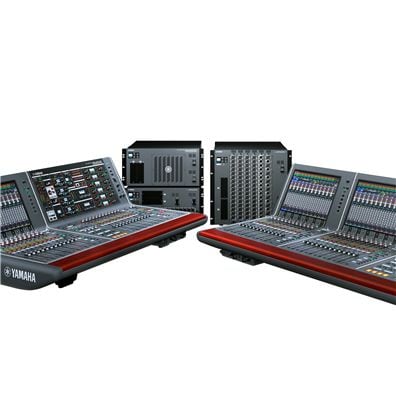RIVAGE PM10 Installation Report: Mie Center for the Arts
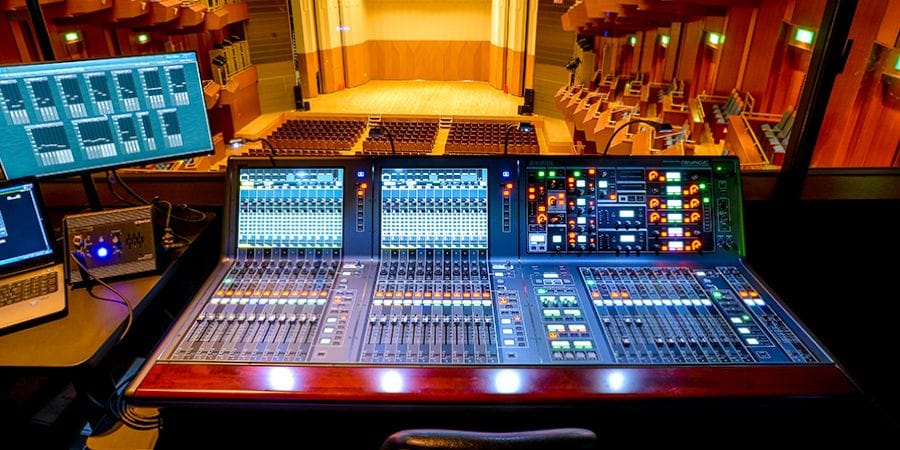
Yamaha RIVAGE PM10 at the Mie Center for the Arts main hall
(Translated from PROSOUND magazine Vol. 194, August 2016. Thanks to the Mie Prefecture Culture Promotion Organization. Photos by Ryo Kawakami.)
The Yamaha RIVAGE PM10 Digital Mixing System was first shown at the 2014 Inter BEE exhibition in Tokyo, with shipments beginning later 2015. The RIVAGE PM10 is a worthy successor to Yamaha’s highly regarded PM1D, taking over that legendary console’s flagship status. It features Hybrid Microphone Preamplifiers that combine SILK Processing developed in cooperation with Rupert Neve and advanced Yamaha analog technology, a flexible interface that easily adapts to just about any operating requirements, and Yamaha’s original TWINLANe protocol for large-scale networked systems. The PM10 represents the pinnacle of Yamaha professional console development and performance.
A large number of companies and facilities have adopted RIVAGE PM10 systems since shipments began. Beginning with this issue, PROSOUND magazine plans to provide installation reports as they become available. Our first PM10 installation report is from the Mie Center for the Arts, in Tsu City, Mie Prefecture, Japan. The sound system and the complex’s Fine Arts Center underwent major renovations from February through March 2016, and a RIVAGE PM10 console was installed to replace the analog console that has served the hall since its opening 20 years ago. We asked the hall operators why they chose the RIVAGE PM10, and how it has performed in actual use.
The first full renovation in 20 years features the RIVAGE PM10
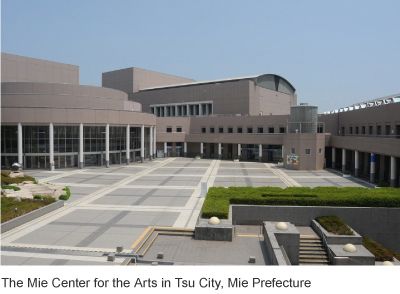
The Mie Center for the Arts is located in a quiet residential area, about a 25-minute walk from Tsu station. It is a multi-purpose cultural facility run by the Mie Prefecture Culture Promotion Organization. The complex includes the Fine Arts Center, Lifelong Learning Center, Gender Equality Center, and Prefecture Library. The central Fine Arts Center comprises three halls: large, medium, and small. The large hall has a seating capacity of 1,903, making it the largest in the prefecture and a popular choice for a concerts and theatrical productions by well-known artists. Events are held at the hall on a daily basis.
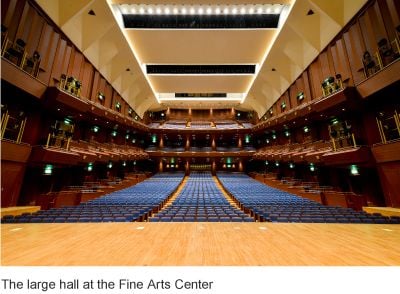
The sound system at the Fine Arts Center of the Mie Center for the Arts recently underwent a complete renovation. The analog console that had been in use for 20 years since the hall began operation was replaced with a Yamaha RIVAGE PM10 Digital Mixing System. Mr. Ken Taniguchi, operations manager at the facility service center, played a major role in sourcing the new equipment and comments with a laugh: “Since we were going to replace the whole system we decided to go with the most advanced equipment available, and it was just around that time that the RIVAGE PM10 was announced.”
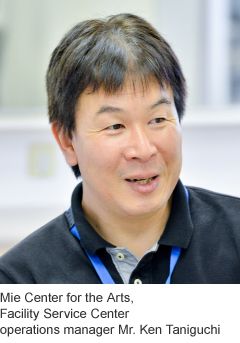
Mr. Taniguchi notes: “Equipment of this type has a limited lifetime, so there is a considerable difference between the useful lifetime of a product that was released five years ago and one that has just been released. As you can surmise from the fact that our fist console was in use for more than 20 years, equipment installed in a hall like this is likely to be used for at least 10 years, so we wanted to acquire a cutting-edge system. We were unsure about new digital equipment, but trusted Yamaha support and were confident that they would follow through. And the Yamaha head office in Hamamatsu is not too far from here.”
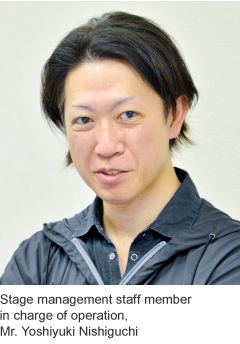
Of course the mere fact that it was new was not the reason that the RIVAGE PM10 was chosen. Mr. Yoshiyuki Nishiguchi, a stage management staff member who manages hall operation and was involved in equipment acquisition, adds: “There were a large number of criteria that had to be met in our new console. Sound was an important factor, but operability was just as important from my point of view. For example, would I have a clear view of the entire stage area from the console installed in the control room? Many newer digital consoles have touch screens that make the back of the control surface tall enough to obscure part of the view, requiring use of a taller chair. I wanted an unobstructed view of the entire stage area while seated normally at the console operating position.”
while seated normally at the console operating position.” “The number of faders in each block was also important. After years of experience it became clear that 12 faders per block would be easier to use than the common 8 faders per block configuration. For a 24-fader surface I would much rather have those faders in two blocks, not three.”
“Because the console would be used in this type of hall, it would also need to have comprehensive matrix facilities. After looking at a number of consoles from both domestic and overseas manufacturers, it was clear that only the RIVAGE PM10 satisfied all of our conditions.”
Both men interviewed above were on hand at the 2014 Inter BEE exhibition to get some hands-on time with the newly announced RIVAGE PM10. The final purchase decision was made after a number of subsequent checks and tests. Mr. Taniguchi adds: “The hall hosts a wide variety of events, so the clear, natural sound of the of the RIVAGE PM10 was ideal. Everyone was surprised by just how much the quality of the microphone preamplifiers affects the overall sound of a digital console. The sound is incredibly clear and natural.”
The decision to go with the RIVAGE PM10 was made in September 2015, and the actual installation took place from February to March 2016.
Three RPio622 I/O Units for 112 Input and 64 Output Channels
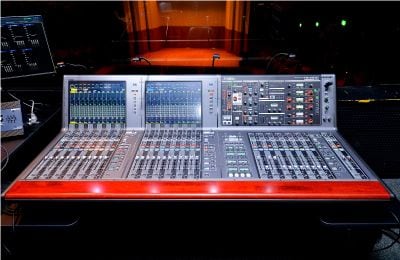
The RIVAGE PM10 system installed at the Mie Center for the Arts comprises one CS-R10 control surface, one DSP-R10 DSP engine, and three RPio622 I/O rack units. The CS-R10, DSP-R10, and one RPio622 are installed in the control room, while the remaining two RPio622 units are installed in the stage left and stage right wings. HY256-TL 256-channel TWINLANe network I/O cards are installed in the DSP-R10 and RPio622 units, and all components are connected via the TWINLANe network.
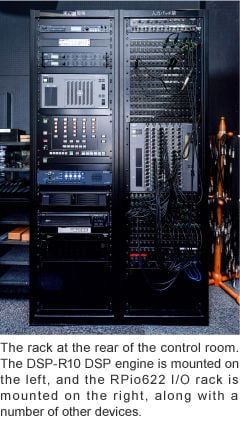
For input and output the control-room RPio622 unit is fitted with three RY16-ML-SILK 16-channel mic/line input cards, two RY16-DA 16-channel analog output cards, and one RY16-AE 16-channel AES/EBU input/output card. That provides a total of 48 mic/line inputs, 32 analog outputs, and 16 AES/EBU inputs/outputs in the control room. Each of the RPio622 units installed in the stage wings is fitted with two RY16-ML-SILK cards and one RY16-DA card for 32 mic/line inputs, 16 analog outputs, and 16 AES/EBU inputs/outputs. The control-room RPio622 is also equipped with an HY144-D 144-channel Dante network I/O card for Dante network connectivity. Mr. Taniguchi notes: “During the renovation we also installed a Yamaha DME64N for acoustic control, NEXO NXAMP power amplifiers, and NEXO STM series movable speakers, all connected to the DSP-R10 via the Dante network. A Shure ULDX wireless system is normally connected to the RPio622 analog inputs so that SILK processing can be applied, but it can also be connected via Dante if required.”
A Flagship Model with a Familiar Interface Makes Operation Easy for Guest Engineers
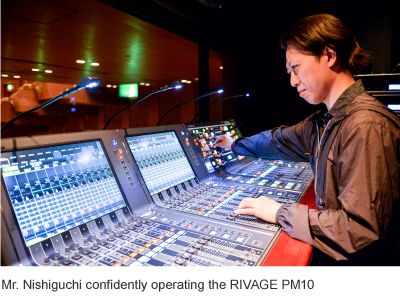
The RIVAGE PM10 system at the Mie Center for the Arts has already been used for numerous concerts and events. According to Ken Taniguchi, in actual use the system’s sound has been even better than expected.
“I suppose it goes without saying, but our sound has changed dramatically. Clarity has improved a great deal. While the previous system was in operation we were sometimes told that it was difficult to make out what speakers were saying, but the new system has eliminated that problem. Of course this is not due to the console alone, but is a result of renewing the entire sound system.”
Mr. Nishiguch is impressed with the system’s operability, and notes with a laugh: “Despite being the flagship model, this might even be the easiest console to operate in Yamaha’s history! I became comfortable with it very quickly, and outside operators have been able to use the system immediately without needing any explanation. The fact that there are usually multiple ways to perform any given operation is a huge plus. For example, although I like to use the Selected Channel controls for EQ, some operators prefer to use the Touch & Turn controls, while others might prefer M7CL style Centralogic operation. The RIVAGE PM10 gives you multiple approaches to achieve the same results.”
“My initial concern about being able to see the entire stage turned out to be a non-issue. The height and angle of the panels at the back of the console are perfect, and allow me to work comfortably in my favorite chair. The touch screen displays are crisp and clear, providing outstanding visibility.”
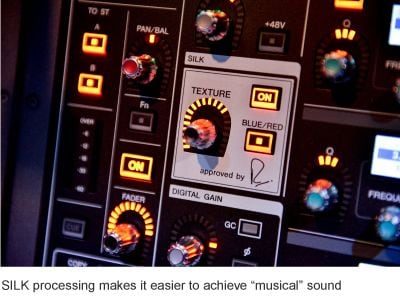
Of the many features and functions provided by the RIVAGE PM10, Mr. Nishiguchi’s personal favorites are the standard EQ and SILK processing.
“Four selectable channel EQ algorithms are provided, and I find the “precise” type to be perfect for my needs. It just feels right. The EQ responds exactly the way I expect it to. A number of guest operators have said that they feel the same way. SILK processing is outstanding too. Whenever I want a little more vocal presence I’ll reach for the SILK processing TEXTURE knob before I touch the EQ. I haven’t grasped the feature’s full potential yet, but it is already clear that it will see a lot of use.”
“The standard graphic EQ is great too, so it gets used on outputs. Digital console processors often have to be assigned to a virtual rack before they can be used, and that can be confusing at times, but in the RIVAGE PM10 you can directly insert the graphic EQs into any channel, which makes things a lot more intuitive.
Both Mr. Taniguchi and Mr. Nishiguchi discuss the RIVAGE PM10 system with a great deal of satisfaction. The system, installed soon after its release, will undoubtedly provide vital sound support at the Mie Center for the Arts for many years to come.
Mr. Taniguchi concludes: “Confidence in Yamaha support is a significant factor, but the fact that Yamaha consoles are an industry standard is very important too. Most of the consoles that outside engineers bring into the hall are Yamaha and, as Mr. Nishiguchi mentioned earlier, most guest engineers can operate our system immediately without difficulty. A wide variety of outside engineers and operators make use of our hall, and just that fact alone has made our decision to install a Yamaha system pay off in a big way.”


